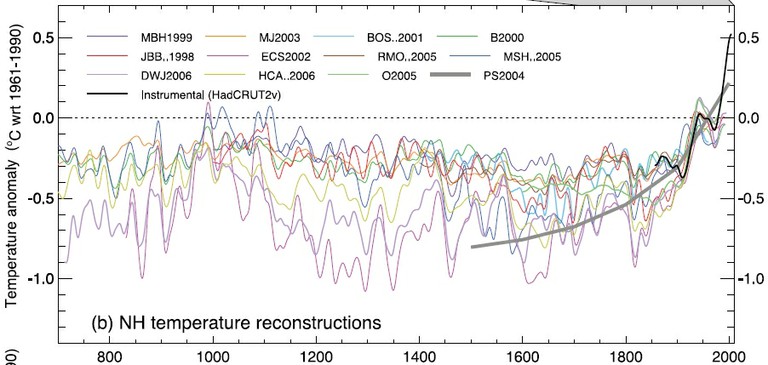Medieval Warm Period
The Medieval Warm Period (MWP) occurred around one thousand years ago. This is known by examinations of ice core records and multiple proxy models from multiple interrelated disciplines.
There is no controversy about the existence of the Medieval Warm Period scientifically or in the popular press. Both sides of the climate debate seem to be in agreement that it existed.
The remaining debate seems to be cause and effect. The occurrence of the MWP certainly was not caused by massive industrial output of greenhouse gases. The lead scientific theory is that it was a naturally occurring event, and data indicate it was a Dansgaard-Oeschger (D-O) event. These events seem to occur on 1470 year intervals with periodic skips in interval. Generally this is an overturn of the oceanic heat content between the northern and southern hemispheres.
The current scientific understanding is that the MWP was not ‘as much’ of a global event as it was a see-saw of the global heat content between the two hemispheres. Evidence also indicates that there was a slight global rise in temperatures.
It is notable that some evidence indicates a human fingerprint in the climate even before the industrial revolution. This seems to be related to land use changes and burning as shown by NASA research.
While the exact mechanisms and attributions are still being examined, it might be assumed that some aspects of slow feedbacks may have played a part. Possibly changes in ice albedo, seasonal shift and vegetation may have played a part. The MWP remains an interesting study area for climate science as better understanding of this period may provide better understanding of the related feedback mechanisms. This could help science better understand modern changes pertaining to current warming trends.
Evidence to date indicates that current global temperatures are higher now than at the peak global temperature of the Medieval Warm Period.
Links
- https://www.ncdc.noaa.gov/paleo/pubs/moberg2005/moberg2005.html
- https://www.ncdc.noaa.gov/paleo/globalwarming/medieval.html
- 2005/09 NASA: Methane Gyrations Last 2,000 Years Show Human Influence on Atmosphere
- 2004/12 RealClimate: Weren’t temperatures warmer than today during the “Medieval Warm Period”? (
 ) (
) ( )
) - 2006/07 RealClimate: Medieval warmth and English wine
- Related content
- Natural Cycle
- Natural Variation
- Dansgaard Oeschger Events

